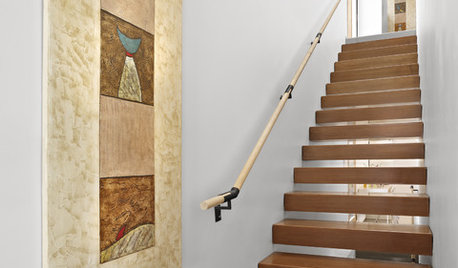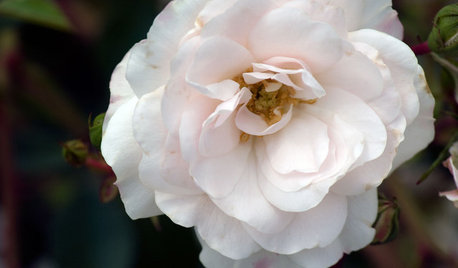Cut Back Climbing Rose?
raymondo17
10 years ago
Related Stories

PLANTING IDEASGreat Garden Combo: Rose + Clematis for Small-Space Impact
We all need somebody to lean on. And when a rose supports a climbing vine, the results can totally transform a small garden
Full Story
KNOW YOUR HOUSEStair Design and Construction for a Safe Climb
Learn how math and craft come together for stairs that do their job beautifully
Full Story
WINTER GARDENINGPruning Secrets for Exquisite Roses
Encourage gorgeous blooms year after year with this time-tested advice on how to prune your rosebush in winter for health and shape
Full Story
GARDENING GUIDESRoses: Crowning Touch of Gardens
Whether you're the Miss or Mister America of gardening or take a hands-off approach, roses can be a winning addition to your landscape
Full Story
GARDENING GUIDES5 Favorite White Roses for a Purely Beautiful Garden
How does your garden glow? With roses that look like light and smell divine
Full Story
DECORATING GUIDESSpring Style: Fresh-Cut Flowers for Every Room
Graceful, lively or dramatic, fresh flowers make rooms of every shape, size and style that much lovelier
Full Story
GARDENING GUIDESWhat Kind of Roses Should You Grow?
Want to add the beauty of roses to your garden? Find out which ones, from old-fashioned to modern, are right for you
Full Story
GARDENING GUIDES6 Captivating Roses for an Alluringly Fragrant Garden
Perfume your garden with aromas from richly spicy to lightly sweet, without sacrificing an inch of color
Full Story
SPRING GARDENINGHow to Grow a Rose Garden in Pots
Everything can come up roses, even without a plot of soil in sight. This step-by-step guide to growing roses in containers shows you how
Full Story
GARDENING GUIDES5 Sweet to Spirited Pink Roses for an Enchanting Garden
Whether you go demure or daring, there's a pink rose here to make you flush with garden pride
Full Story







buford
jacqueline9CA
Related Professionals
Baltimore Landscape Architects & Landscape Designers · Horsham Landscape Architects & Landscape Designers · Suffern Landscape Architects & Landscape Designers · Hartford Landscape Contractors · Chattanooga Landscape Contractors · Davidson Landscape Contractors · Desert Hot Springs Landscape Contractors · Edwardsville Landscape Contractors · Fort Atkinson Landscape Contractors · Fort Mill Landscape Contractors · Harvey Landscape Contractors · Mastic Beach Landscape Contractors · Selden Landscape Contractors · Vermilion Landscape Contractors · Camp Springs Landscape Contractorsseil zone 6b MI
raymondo17Original Author
bayarea_girl_z10a_ca
bart_2010
mzstitch
jacqueline9CA
cecily
raymondo17Original Author
toolbelt68
raymondo17Original Author
Zyperiris
jacqueline9CA
raymondo17Original Author
minflick